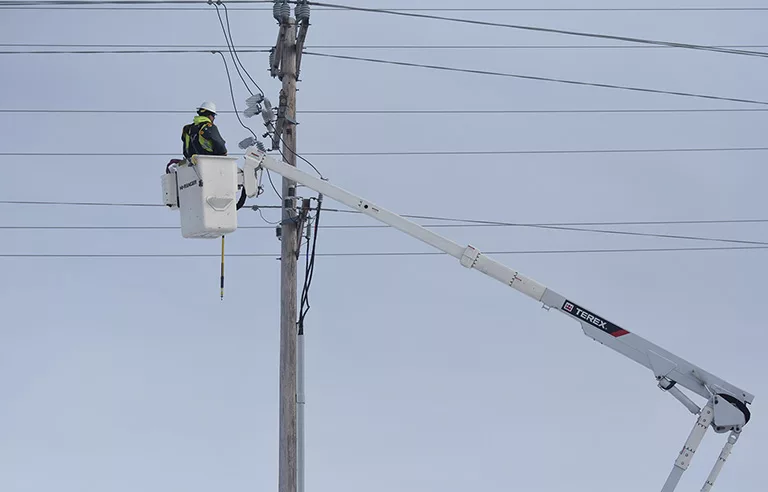How should line workers go about setting up a bucket truck or digger derrick in wintry conditions?

Responding is Jim Olson, senior product engineer, Terex Utilities, Watertown, SD.
A cold and snowy winter is expected to blanket much of the country this season, according to long-range predictions. It’s important for line workers to know how to properly set up their equipment in snow and ice because normal traction is greatly reduced. Just like you need to maintain traction when you walk and drive in the winter, bucket trucks and digger derricks need to be set up in a stable position.
Find the location
Choosing the proper location to set up the truck is key. As crews are heading out for the day, they should think about their jobsite and where they’ll position the truck. Operators should set up the equipment on the flattest terrain possible to make sure the truck is stable. Wheel chocks should be used to prevent movement of the truck.
The equipment should also be located as far onto a street or road as possible, so the truck doesn’t move during operation and slide down a slope into a ditch or another hazard. Choose a location for the truck that gives the best stability for work to be done. Cones and the appropriate traffic markers should be used to alert drivers and identify the work area.
Clear away snow
If it’s possible, crew members should clear snow away from the area where the tires and outriggers will be sitting while they work. Both the tires and outriggers should contact bare ground.
Driving the truck to the jobsite can also cause snow and ice to accumulate on surfaces of the truck. Brush off any snow or ice that may have accumulated on the outrigger pads or outriggers during transportation. Make sure the outrigger pads contact bare ground and ensure the outrigger feet are clear before setting up the truck. Traction aids like sand and gravel can also be a good option to use under tires and outriggers.
Key points
It’s important to feather the controls of the bucket truck or digger derrick in winter conditions to limit any sudden boom movements. The operator should stop boom function immediately if the equipment starts to slide during work. If this happens, the utility crew should pause the job, assess the situation and follow any company policies to address the risks. The crew setting up the unit for operation has the entire responsibility for the equipment to be in a stable position. Crew members who are onsite are the only ones who can evaluate the conditions and terrain.
Following these tips as well as the setup instructions in the operator’s manual for the bucket truck or digger derrick will ensure utility work can be completed even when winter weather strikes.
At McCraren Compliance, we offer a variety of safety training programs to help reduce the risk of accidents. Take a moment to check out our class calendar and see how our training and consulting services can support your safety goals.
Original article published by Safety+Health an NSC publication


